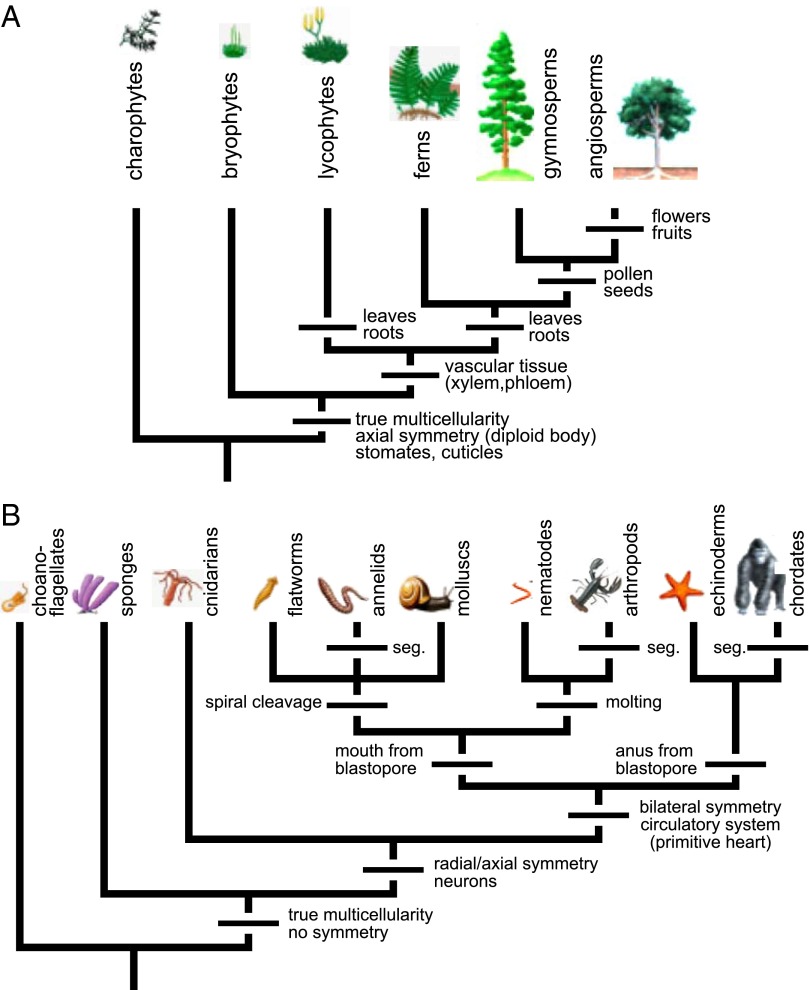Fig. 2.
Consensus phylogenetic trees for the evolution of the major lineages of modern plants (A) and animals (B) underscore the role of physics as a major selective pressure for driving the evolution of the design of multicellular organisms. (Adapted from refs. 36, 39, and 40.) The origins of the major innovations in organismal form are also plotted on these trees. The earliest diverging lineages of multicellular animals (e.g., sponges and cnidarians) and of multicellular plants (e.g., bryophytes) lack complex transport tissues. The later-arising groups of vascular plants and bilateral animals evolved complex transport tissues, namely, xylem and phloem, and circulatory systems, respectively. In terms of species numbers, vascular plants and bilateral animals dominate modern ecosystems, but it is important to consider the simpler forms of the basal lineages to understand the selection pressures driving the evolution of complex organismal forms. Organism drawings are intended to associate the names of different groups with representative organisms. Due to their size range of 7 orders of magnitude, they are not presented in proper scale. seg, segmentation. (Reprinted by permission of Pearson Education, Inc., Upper Saddle River, NJ.)

